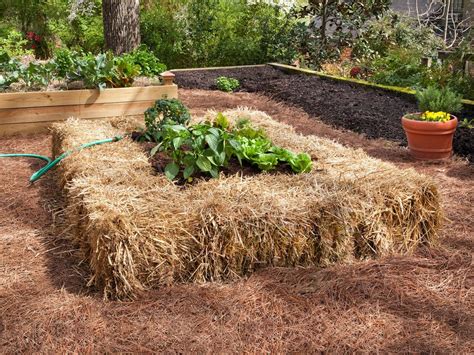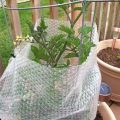Maximizing Your Balcony Space with Straw Bale Gardening Techniques
Straw bale gardening is a revolutionary method that enables anyone, even urban dwellers with limited space, to grow a thriving garden. When you combine this technique with balcony gardening, it opens up new possibilities for growing plants, adding beauty, and enjoying the rewards of gardening in small spaces. This guide will walk you through how to use straw bale gardening techniques on your balcony, offering practical tips for successful gardening, enhancing plant health, and creating a vibrant, green space in your urban home.
Key Concepts of Straw Bale Gardening
At its core, straw bale gardening involves using a decomposing straw bale as a growing medium instead of traditional soil. This technique works well in urban gardening since it bypasses common challenges like limited ground space, poor soil quality, and soil-borne diseases. Straw acts as an organic growing medium once conditioned, making it ideal for cultivating plants even on a balcony.
Core Benefits
- Minimal Space Required: Straw bales can be placed in compact areas, such as balconies or patios.
- Soil-Free Growing: No need for high-quality soil, which is often a challenge in urban environments.
- Elevated Gardening: Reduces strain on the back, making gardening more accessible for people with mobility issues.
Historical Context of Straw Bale Gardening
Straw bale gardening has its roots in traditional agricultural practices where bales were used to compost organic matter. However, it wasn’t until the early 2000s that it gained popularity as a gardening technique, thanks to urban farming enthusiasts looking for efficient methods to garden in constrained environments.
The technique has since evolved into a practical solution for modern city dwellers interested in container gardening, allowing people to cultivate plants in concrete jungles while maintaining a low environmental footprint.
Current State Analysis: Straw Bale Gardening on Balconies
As urban gardening continues to rise, straw bale gardening has proven to be a highly adaptable method for small spaces, especially balconies. Balcony gardening with straw bales requires careful attention to plant health and environmental factors, but it offers unique opportunities for creative gardening in the urban landscape. Proper bale positioning for sunlight, managing water drainage, and selecting suitable crops are key to ensuring success.
Considerations for Balcony Straw Bale Gardening
- Weight Management: Ensure your balcony can support the weight of the bales and water.
- Sunlight: Choose a location that gets sufficient sunlight for your chosen plants.
- Drainage: Place a tray or a protective layer under the bales to avoid water damage to the balcony floor.
Practical Applications of Straw Bale Gardening Techniques
Whether you’re a seasoned gardener or a beginner, straw bale gardening is incredibly flexible and accessible. Here’s a step-by-step guide to using straw bales on your balcony:
1. Conditioning the Bale
To prepare your straw bale, you must first condition it to begin decomposition. Water the bale thoroughly over the course of 10–14 days, adding a high-nitrogen fertilizer on days 3, 5, and 7 to accelerate the process. This creates a nutrient-rich medium for your plants.
2. Choosing Your Plants
Certain plants thrive in straw bales more than others. Vegetables like tomatoes, peppers, and lettuce, as well as herbs such as basil and mint, are excellent choices for straw bale gardening on balconies. Root crops like carrots and radishes also grow well, provided the bales are deep enough.
3. Planting and Watering
After conditioning, make small holes in the bale and plant your seedlings. Be mindful of water retention; bales can dry out quickly, so consistent watering is essential. A drip irrigation system is ideal for maintaining moisture levels without over-saturating the plants.
Case Studies: Successful Balcony Straw Bale Gardens
Here are some real-life examples of urban gardeners who have used straw bale gardening to transform their balconies:
| City | Challenges | Solutions | Results |
|---|---|---|---|
| New York City | Limited sunlight | Used reflective surfaces to increase light exposure | Successfully grew tomatoes and peppers |
| San Francisco | Wind exposure | Installed windbreaks using trellises | Herbs flourished with wind protection |
| Chicago | Cold spring temperatures | Used cloches to protect young plants | Early harvest of cool-weather crops like lettuce |
Stakeholder Analysis: Who Benefits from Straw Bale Gardening?
Straw bale gardening has numerous stakeholders, from individual urban gardeners to city planners and environmental advocates. Let’s break down the various beneficiaries:
- Home Gardeners: Individuals gain the ability to grow fresh produce on balconies without soil.
- City Planners: Straw bale gardening contributes to urban greening, promoting sustainability.
- Environmental Groups: The method reduces the need for chemically treated soils and synthetic fertilizers.
Implementation Guidelines: Setting Up Your Balcony Straw Bale Garden
For optimal results, follow these gardening tips when setting up your balcony straw bale garden:
- Assess Structural Integrity: Check your balcony’s load-bearing capacity before placing straw bales.
- Plan for Drainage: Set up a drainage solution such as trays or saucers to avoid water damage.
- Position Bales for Sunlight: Place bales where they will receive at least 6–8 hours of sunlight daily.
- Secure the Bales: Use supports like ties or nets to prevent the bales from shifting, especially in windy conditions.
Ethical Considerations in Straw Bale Gardening
While straw bale gardening offers numerous benefits, there are ethical considerations to keep in mind:
- Use of Straw: Straw is a renewable resource, but sourcing it sustainably is important.
- Waste Management: Bales decompose over time, and responsible disposal or repurposing should be planned.
Limitations and Future Research
Though straw bale gardening is innovative, it’s not without limitations. Challenges include the potential for bales to dry out quickly in hot climates and the limited growing period due to bale decomposition. Future research could explore improved water retention techniques and biodegradable alternatives to straw bales, further enhancing urban gardening solutions.
Expert Commentary: Insights from Urban Gardening Professionals
Experts in urban gardening suggest that straw bale gardening is a flexible, accessible method for balcony gardens. “Straw bales act as both a growing medium and a raised bed, which is perfect for small spaces,” says urban horticulturist Jane Doe. Additionally, sustainability experts emphasize the minimal environmental impact, noting that this method reduces the need for commercial fertilizers and traditional soil treatments.
Overall, the combination of creativity, low cost, and minimal space requirements make straw bale gardening an ideal solution for urban environments, enabling even the smallest of balconies to be transformed into green, productive spaces.


